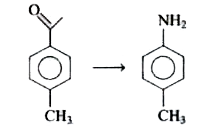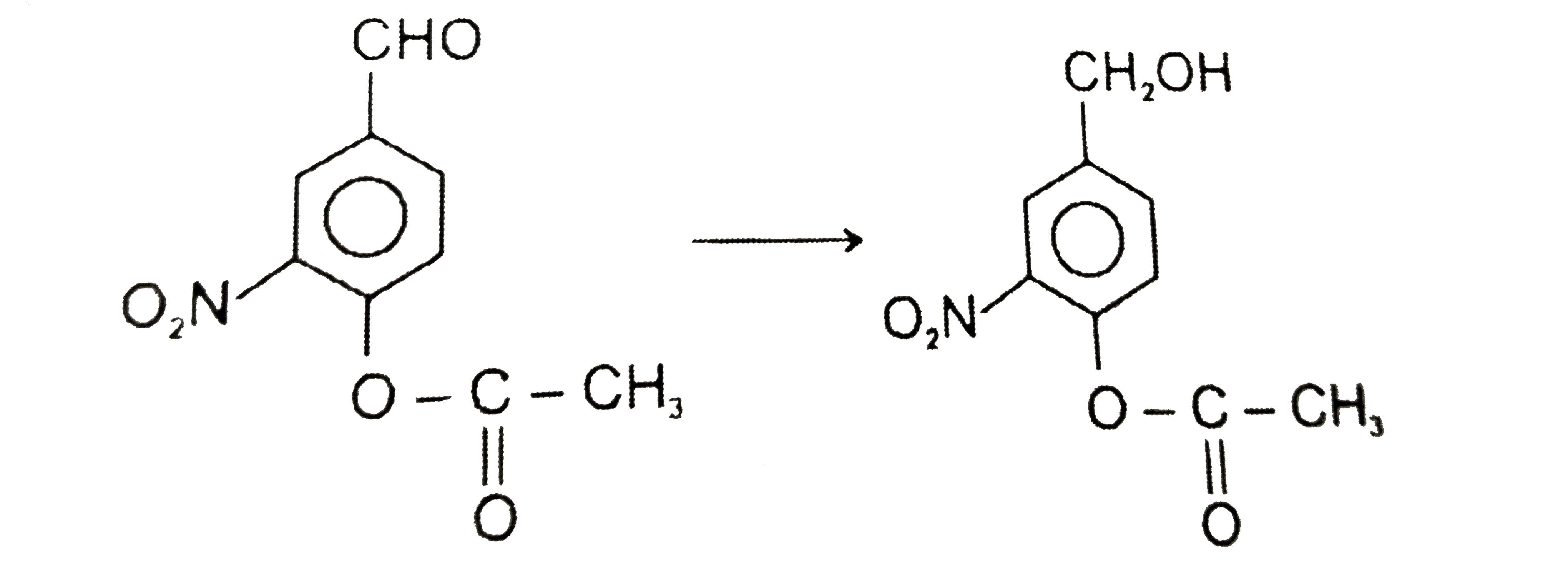Write the suitable reagent for the following conversion.
Acetone Re−agent−−−−−→Acetic acid
The correct Answer is:1
To convert acetone (CH3COCH3) to acetic acid (CH3COOH), we can use a suitable reagent. Here’s a step-by-step solution:
Step 1: Identify the Reactant and Product
- Reactant: Acetone (CH3COCH3)
- Product: Acetic Acid (CH3COOH)
Step 2: Determine the Type of Reaction
- The conversion from acetone to acetic acid involves oxidation. Acetone is a ketone, and we need to oxidize it to a carboxylic acid.
Step 3: Choose the Suitable Reagent
- A strong oxidizing agent is required for this conversion. One of the most common reagents for oxidizing ketones to carboxylic acids is Potassium dichromate (K2Cr2O7) in the presence of sulfuric acid (H2SO4).
Step 4: Write the Reaction
- The reaction can be represented as follows:
CH3COCH3K2Cr2O7,H2SO4−−−−−−−−−−→CH3COOH+HCOOH
- Here, the acetone is oxidized to acetic acid, and formic acid (HCOOH) is also produced as a byproduct.
Step 5: Conclude the Reaction
- After the oxidation process, we obtain acetic acid as the main product.
Final Answer
- The suitable reagent for the conversion of acetone to acetic acid is K2Cr2O7 in the presence of H2SO4.
---
- Reactant: Acetone (CH3COCH3)
- Product: Acetic Acid (CH3COOH)
- The conversion from acetone to acetic acid involves oxidation. Acetone is a ketone, and we need to oxidize it to a carboxylic acid.
- A strong oxidizing agent is required for this conversion. One of the most common reagents for oxidizing ketones to carboxylic acids is Potassium dichromate (K2Cr2O7) in the presence of sulfuric acid (H2SO4).
- The reaction can be represented as follows:
CH3COCH3K2Cr2O7,H2SO4−−−−−−−−−−→CH3COOH+HCOOH
- Here, the acetone is oxidized to acetic acid, and formic acid (HCOOH) is also produced as a byproduct.
- After the oxidation process, we obtain acetic acid as the main product.
- The suitable reagent for the conversion of acetone to acetic acid is K2Cr2O7 in the presence of H2SO4.
Topper's Solved these Questions
- BASIC CONCEPTSBOOK - RESONANCE ENGLISHCHAPTER - BASIC CONCEPTSEXERCISE - Inorganic chemistry (Periodic Table & Periodicity
27 Videos
- BASIC CONCEPTSBOOK - RESONANCE ENGLISHCHAPTER - BASIC CONCEPTSEXERCISE - ORGANIC CHEMISTRY(BASIC CONCEPTS)
27 Videos
- AROMATIC COMPOUNDSBOOK - RESONANCE ENGLISHCHAPTER - AROMATIC COMPOUNDSEXERCISE - Part - III Practice Test-22
1 Video
- BIOMOLECULESBOOK - RESONANCE ENGLISHCHAPTER - BIOMOLECULESEXERCISE - Advanced Level(Part II)
33 Videos
Similar Questions
Knowledge Check
The suitable reagents for the following reaction are:
 APCl5−−→NaOH−−−→Δ−−→BI2+NaOH−−−−−−→H⊕−−→NH3−−−−−→ΔBr2+KOH−−−−−−→CNH2OH−−−−→PCl5−−→dil.NaOH−−−−−−−−→ΔN3H−−−−−→ΔDH2N−OH−−−−−−→Δ−−→
APCl5−−→NaOH−−−→Δ−−→BI2+NaOH−−−−−−→H⊕−−→NH3−−−−−→ΔBr2+KOH−−−−−−→CNH2OH−−−−→PCl5−−→dil.NaOH−−−−−−−−→ΔN3H−−−−−→ΔDH2N−OH−−−−−−→Δ−−→
Select the suitable reagent for above conversion.ACH2N2/ΔBCBr4/RLiCH2C=CH2Dt-BuOK
The most suitable reagent for the following conversion, is
View SolutionThe suitable reagent for the following reactions is

View SolutionThe reagents for the following conversion is /are:

View SolutionThe reagents(s) for the following conversion,
 is :
is :
View SolutionThe reagent(s) for the following conversion

is/are:
View SolutionThe reagent(s) for the following conversion

is/are:
View Solution


